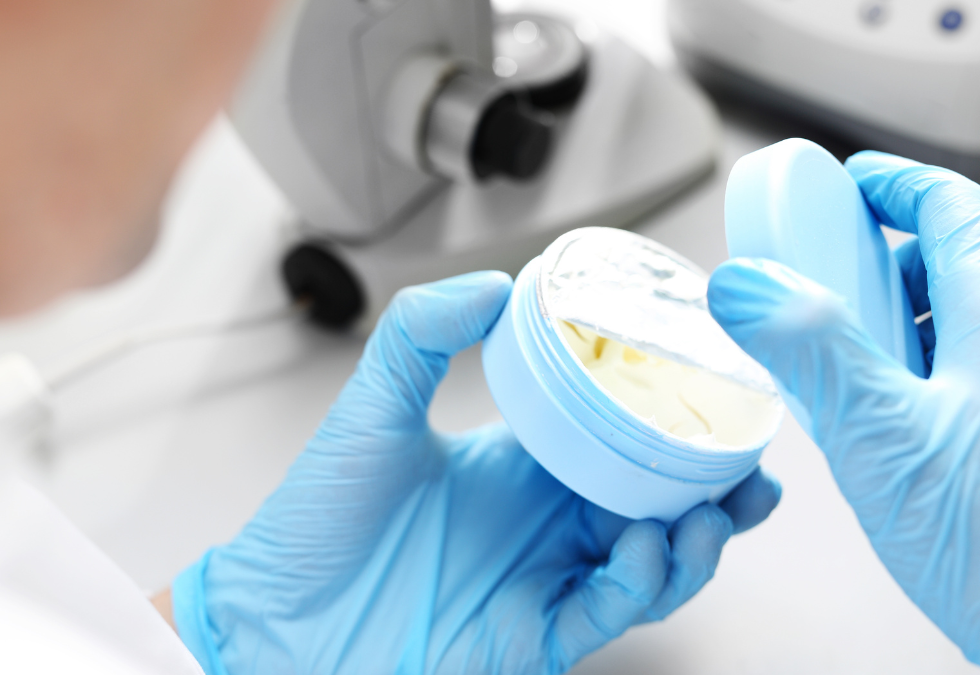The beauty industry is a large source of plastic waste, of which only a small fraction is recycled. It is estimated to generate as much as 120 million tonnes of waste per year. What is being done to reduce the volume of waste?
Table of contents
- Cosmetic packaging – where is the problem exactly?
- Plastic waste – what needs to change?
- The future of packaging in the cosmetics industry
- Waste in the beauty sector – summary
Cosmetic packaging – where is the problem exactly?
Over the past few decades, plastic packaging has become almost ubiquitous in every industry, from pharmaceuticals to the food industry. The cosmetics industry is no exception. In fact, it could be said that it leads the way among industries using this type of packaging.
Why is beauty packaging so often made of plastic? There are many reasons. First of all, it is light, mouldable, leak-proof and cheap to manufacture. In addition, many types of beauty products can only be packaged in this type of container. Only plastic packaging effectively protects them from bacterial contamination, the destructive effects of oxygen, and the sun.
These properties are the reason why plastic packaging is used on a mass scale in the cosmetics industry and many other industries. However, all the advantages of this packaging are overshadowed by its environmental impact. The service life of beauty packaging made of plastic is very short. Once the product is used, the container usually becomes useless waste, never to be used again.
From an environmental point of view, it is the point at which packaging becomes waste that is the source of the problem. Until recently, the beauty industry has adopted a linear model of packaging utilisation, namely one in which, once the contents had been used, the packaging went to a landfill, where it had to be disposed of. It is for this reason that plastic packaging, including beauty industry’s waste, has become a major problem and challenge facing the entire industry and the world.
The modern economy would certainly not be able to immediately stop using plastic packaging. However, it is important to bear in mind that with each passing year plastic waste is becoming an increasingly serious problem, with a devastating impact on the environment. That is why action must be taken today to reduce the amount of beauty industry’s waste.
Plastic waste – what needs to change?
How to make beauty packaging more environmentally friendly? Many different factors determine whether a product is eco-friendly. Simply designing packaging so that it requires fewer raw materials in production makes it more green. It is also important to create biodegradable packaging, i.e. packaging that does not require additional disposal, as nature can handle its decomposition.
However, it is not always possible to create biodegradable packaging. In this case, the goal should be beauty packaging that is easy to recycle so that the materials used to manufacture it can be recovered. A perfect example of packaging that can be easily recycled is the popular PET bottles.
In addition to the right approach to packaging design, it is also extremely important to properly educate consumers on how they should deal with cosmetic waste. Plastic packaging must be properly labelled so that customers know, for example, which containers to put used containers in. Consumers should also be educated about ecology. As a result, when buying beauty products, consumers will pay attention to what packaging they come in, and make an informed consumer choice.
The challenge facing the beauty industry, is to simultaneously meet packaging safety requirements, make sure the product has an attractive appearance and user qualities, and provide environmentally friendly packaging for the entire product line.
Sometimes, changes made to the packaging with a view to environmental sustainability can have a negative impact on customer opinion of the product. For example, the use of recycled plastics can make beauty packaging less rigid, which customers may perceive as lower quality. Therefore, once again, we should emphasise the importance of educating consumers in terms of making informed, ecological choices.
The future of packaging in the cosmetics industry
What will be the future of plastic packaging? Certainly, the main goal for the coming years will be to change the way we think about reusing cosmetic packaging. As already mentioned, the linear economic model, i.e. produce, use and throw away, has been dominant so far. The current trend is to reuse discarded packaging, e.g. as recycled raw material for new packaging. This is the so-called closed-loop economy.
The changes also include the way beauty packaging is designed. The beauty industry is banking on biodegradable packaging and containers that can be easily recycled.
More attention should also be given to the separate collection system and its upgrade, as it is through this system that cosmetic waste can reach places where it will be reused in one form or another. The recycling of packaging itself must also become increasingly simple and cost-effective, which will encourage packaging manufacturers to change their thinking.
As far as the countries of the European Union are concerned, the European Strategy for Plastics stipulates that by 2030 all plastic packaging entering EU markets will be suitable for reuse or cost-effective recycling.
Waste in the beauty sector – summary
The future should bring further development of the practices outlined in our article. Every day, new solutions are being developed to improve the worldwide situation regarding plastic packaging. One thing is certain, the key factor that will now shape the beauty packaging market is ecology and care for the environment.
For the changes to be successful, there needs to be a commitment not only on the part of packaging and cosmetics manufacturers but also on the part of consumers who, by consciously choosing products packaged in eco-friendly packaging, will send a clear signal to the beauty industry that green packaging is what they care about.
If you are looking for the latest packaging solutions for beauty products, feel free to contact Unilogo using our special contact form. The cosmetics packaging machinery you will find in our offer allows dispensing of cosmetics into the latest types of packaging designed with care for the environment.


